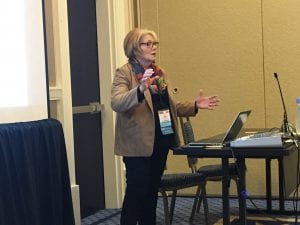Things to Consider When Developing a Community of Practice

The National Convergence Technology Center (CTC) recently delivered a conference breakout presentation on its successful Convergence College Network (CCN) community of practice (COP). The CCN consists of IT educators and administrators from 64 schools in 24 states that meet regularly to discuss best practices and resources. Participants in COP share a common passion or interest, exchanging know-how and learning together, often by building collectively on proven solutions. The idea is for the group to develop new approaches to common problems and challenges. COP are typically less formal than traditional work groups and project teams that have rigid hierarchies and deadlines.
After spending most of the conference sessions describing how COP work, the National CTC offered attendees some things they could do to explore this sort of group in their own institution:
* Agree on the purpose – Because COP are more organic and informal, the needs and goals of the group should come directly from its members. For the National CTC, the CCN community’s shared passion is to improve IT student success. Educators want new teaching approaches, new curriculum ideas, new classroom resources, and new solutions to enduring problems. As long as members are getting quality help in those areas, thereby proving its value, the CCN community will likely endure.
* Explain the value to administration – Informal structures need special attention, and that means keeping administrators informed of the hard work – and collaborative successes – the community is delivering so institutional support can be given as needed. That support could be something as simple as providing a spare meeting room or arranging for a public commendation of the group’s success.
* Create a system for communication – Sharing is key for any thriving COP. To facilitate that, a communication infrastructure must exist to allow the members to connect. The National CTC subscribes to WebEx to schedule formal quarterly web meetings and uses a free online wiki service to post and archive group documents, but there are also numerous informal “offline” interactions that happen via regular e-mail. Providing institutionally-supported communication channels is another reason why it’s important to seek administrative support.
* Invite energetic experts – One of the hallmarks of a successful COP that Gilbert Probst and Stefano Borzillo discovered (see their paper “Why Communities of Practice Succeed and Why They Fail”) was the inclusion of external expertise. As valuable as the sharing may be among COP members, bringing in an outside expert to discuss a new topic or offer a fresh perspective not only adds to the group’s overall know-how, but helps create enthusiasm about the group. The National CTC often invites guest speakers to give presentation to the CCN at quarterly meetings.
* Monitor and adapt – COP are informal by design, so they need to be flexible and follow the needs and interests of the members. Even so, COP still need some degree of structure. Specifically, someone needs to assess the activities, keep everyone organized, maintain those communication systems, and review the overall community structure to make sure it’s as efficient and useful as is possible. For the National CTC, grant staff members work with partner schools to discuss the CCN’s activities and make sure they serve the COP’s mission and needs.
Learn more about COP from our March 2017 blog entry.
